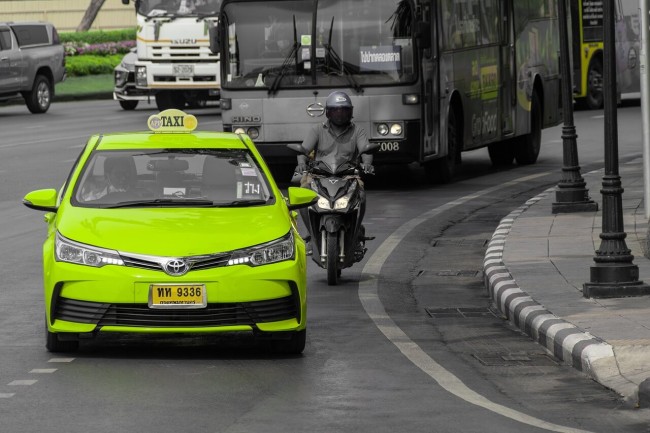
In urban centers worldwide, the issues of traffic congestion, pollution, and long commutes continue to impact daily life. Micromobility solutions, including e-scooters, bikes, and shared electric vehicles, are reshaping how people move within cities.
As cities embrace new technologies and become “smarter,” micromobility will play an even bigger role in creating efficient, sustainable, and user-friendly transportation networks.
Here in this article, we will discuss how micromobility is shaping up as a critical component of smart city development and how data and IoT are making this integration possible.
Why Micromobility Matters in Urban Spaces
Micromobility includes a variety of small, electric, or non-motorized vehicles ideal for short distances, typically less than five miles. The goal is to replace short car trips with alternatives that are cheaper, faster, and eco-friendly.
Cities like Paris, Singapore, and Copenhagen are already seeing the positive impacts of micromobility, including fewer emissions, reduced noise, and lower demand for parking.
As cities grow and look for sustainable ways to handle increased mobility, micromobility offers solutions that reduce car dependency, improve accessibility, and make daily life more convenient for residents and visitors alike.
Smart City Planning Meets Micromobility
Integrating micromobility into a city’s transportation system is more than just adding bike lanes. For micromobility to fully work, it needs to be part of a connected transportation ecosystem driven by data and smart infrastructure.
This includes Mobility-as-a-Service (MaaS), which integrates micromobility with public transport, ride-sharing, and other mobility options into a single, user-friendly platform. By connecting these modes of transport, cities can ensure seamless transitions and make it easier for people to navigate urban spaces efficiently.
Using Data Analytics to Understand Mobility Needs
Data is essential for effective city planning, especially for transportation. Cities and micromobility providers use data from ride-sharing apps, vehicle sensors, and IoT (Internet of Things) devices to gain insights into rider behavior, peak travel times, and popular routes. This information allows city planners to make informed decisions about infrastructure needs.
For example, by tracking where e-scooters are most frequently dropped off or picked up, cities can establish parking areas that reduce street clutter and ensure scooters are available in high-demand areas.
Solutions like ATOM Mobility’s real-time data analysis enable operators to make quick adjustments to fleet deployment, scale services up or down based on demand, and improve the overall user experience. This type of data-driven insight is invaluable for cities as they aim to improve urban mobility in a meaningful way.
Creating safer, connected infrastructure
Once we know where and when people travel, the next step is to make sure they can move safely. IoT-enabled infrastructure is transforming the urban landscape, allowing cities to improve safety for micromobility users.
Imagine crosswalks that automatically communicate with approaching e-scooters to slow them down or bike lanes with lighting that adjusts based on traffic flow.
Some cities are already using “geo-fencing” technology to limit scooter speeds in high-traffic zones. This tech is being implemented in places like Tel Aviv and Austin, where it’s helping to reduce accidents and make micromobility a safer option.
When safety measures are built directly into the infrastructure, micromobility becomes a more viable, accessible choice for short trips within the city.
Using IoT to create efficient transportation networks
IoT is a game-changer in making transportation networks run more efficiently. By interconnecting various transit options – including buses, trains, and micromobility – cities can create a seamless experience for users.
Imagine being able to check your phone and see all transportation options nearby, with travel times and environmental impact estimates displayed for each.
ATOM Mobility’s IoT-driven fleet management helps micromobility providers keep their fleets in top shape. For instance, when a shared bike or scooter’s battery runs low, IoT alerts notify maintenance teams, ensuring vehicles are available when needed.
This kind of interconnected system helps cities run more smoothly, with fewer traffic jams and more reliable transit options for everyone.
Benefits of a data-driven micromobility network
A data-driven micromobility network does more than improve transportation efficiency. It brings a range of benefits that make cities more livable:
- Reduced emissions and pollution: With more people choosing eco-friendly options for short trips, cities see reduced emissions and cleaner air.
- Improved traffic flow: Fewer cars on the road, especially during peak hours, mean better traffic flow and easier commutes for everyone.
- Affordable mobility for all: Micromobility options are often more affordable and efficient than traditional public transportation, providing an accessible way for people to get around.
- Economic boost: Reducing the need for parking and lowering congestion can lead to increased foot traffic and open up new possibilities for urban planning and economic growth.
Addressing the challenges
Of course, creating a smart city with integrated micromobility isn’t without its challenges. Safety concerns, infrastructure requirements, and regulatory issues all need to be addressed.
Cities must work closely with providers to develop regulations and infrastructure that protect riders and pedestrians alike.
Here, solutions like ATOM Mobility’s comprehensive fleet management systems can make a difference, helping operators comply with local regulations and offer a better experience for users.
The future is micromobile (and smart)
As cities look toward a future where mobility is flexible, eco-friendly, and efficient, the collaboration between city planners and providers is essential.
With data-driven micromobility networks and IoT-powered infrastructure, urban transportation is on the brink of a major shift. Micromobility solutions don’t just provide convenience—they’re critical to creating greener, more connected cities.
So, if you’re ready to see cities evolve with technology that serves everyone, micromobility is ready to roll. This is more than just a convenient way to get around; it’s the start of a transportation revolution that’s making urban life cleaner, simpler, and a lot more enjoyable.
